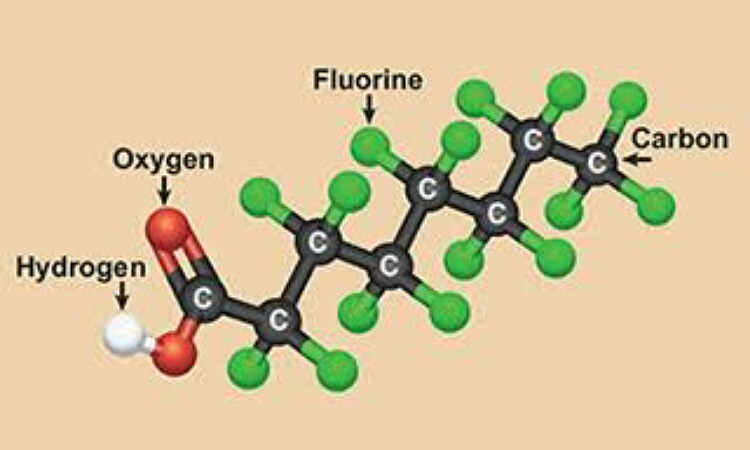PFAS or poly fluoro alkyl substances are everywhere. They are on our clothes, in foods, in tap water and in home products. They are even present in our body. But they are harmful for health. What are these PFAS? How do they harm the body? How to reduce their exposure?
PFAS or poly fluoro alkyl substances
PFAS or poly fluoro alkyl substances are forever chemicals. They are man made substances that are indestructible. DuPont Chemical first used this product in the 1940s in their Teflon coating and Scotchgard fabric. These repel water, oil and such substances that cause wear and tear. Also, they can facilitate cooking.

However, over time, research showed that these substances do more harm then good. Sydney Evans, senior science analyst at the Environmental Working Group in Washington, D.C., USA opines:
“All of those same properties that make them really resistant to water, it also makes them pretty indestructible in the environment,”
“They are almost impossible to break down.”
Research is ongoing to find ways to destroy them but with no success yet. Companies stopped using PFAS on knowing about its health dangers. But in its place, they began using slightly different chemical compounds. But these too have similar risks. Scott Bartell, environmental and occupational health professor at the University of California, Irvine adds:
“They’re all difficult to break down in the environment because they have a carbon fluorine bond, (which) is one of the strongest bonds known to man.”
There are 9000 different kinds of these forever chemicals.
Health risks
Data from the Agency for Toxic Substances and Disease Registry (a federal public health agency run by the U.S. Department of Health and Human Services) reveals that these forever chemicals can cause kidney, prostate and testis cancer. They raise blood bad cholesterol and also cause damage to liver cells. They can trigger asthma and cause obesity and thyroid disease.
Moreover, these substances can increase risk of preeclampsia in pregnant women. They reduce fertility and produce babies with less birth weight. In children, they lessen the take of vaccines. The immunological response to them is lower.

Experts are unsure whether there is any safe level of these substances below which risk is absent. David Nadler who is a research faculty member at the New York Institute of Technology in Old Westbury, New York feels that the culprit is not only PFAS. He states:
“(PFAS) just might be one of the ingredients in the recipe of all of these other chemical mixtures that we’re inhaling, or that may be in small quantities, in our water supply and with clothing, as well,”
How to lessen effects?
One should try to reduce the exposure to these substances to lessen their perils. Sydney explains:
“Frankly, you can’t stop your exposure to PFAS. There are too many sources,”
“But what you can do is limit your exposure.”
Do not purchase products that claim water resistance and stain resistance. Use cast iron cookware and stop use of nonstick cookware. Filter your water before consumption. Water filters do not completely remove the forever chemicals but they do reduce the amounts in water.

Read here: PFAS contamination in fresh water fish too high for safe health!
Besides individual approach, legal regulations are a must. Urging government to make laws and asking for transparency from companies would have some role in this. Sydney says:
“(If) we all sit back and wait for somebody else to do it, nobody’s going to do it,”
“But if we each take it upon ourselves to write that letter, to send that email, over time, as a group, we can have a huge impact.”
